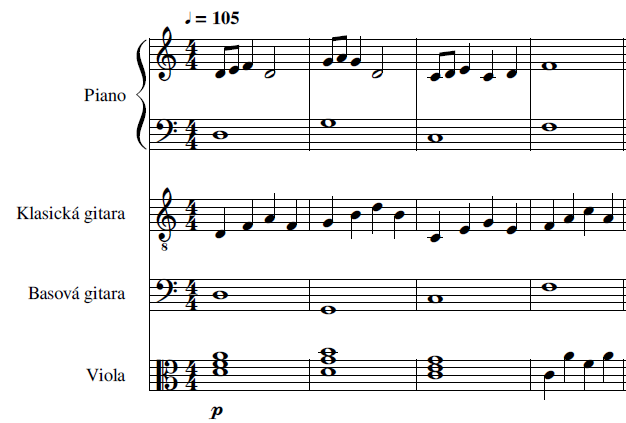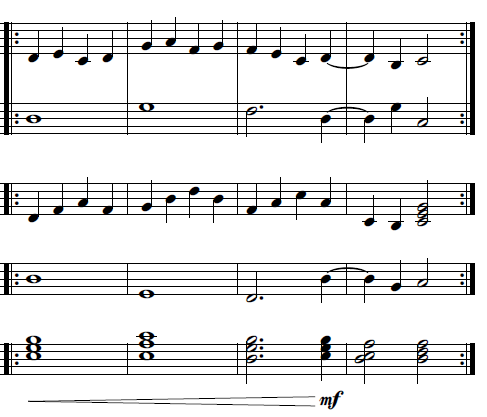Moonlight Guitar
Zápisník experimentátora
Sometimes I sit behind a small piano (Yamaha Reface CP) and compose music. I'm not a musical genius, but I'm fascinated by the mathematical view of music. I sit behind the piano and randomly play some key sequences, and when a hint of melody appears, I try to rework it into a song. I add chords to the melody, try to add more bars, play with the repetition of different parts of the song, and if I get lucky, a song is made.

I wrote this tune for my kids. The melody was composed for Clavinet (one of the instruments on Yamaha Reface CP). Clavinet resembles a guitar and does not sound quite good when you try to play chords on it. But the combination of individual tones sounds very good. And if you play the first note one octave or two lower at the beginning of each bar, you get a very nice sound.
At the beginning I had only a very small piece of song. Even if you don't know the notes, you can see from the picture that a similar motive is repeated every time. Only the notes shift slightly so that the notes D, G, C, and F will gradually play. And the song was born. Just add the last four bars in a different rhythm.

That's how I played it to my kids for weeks. And then I rewrote the song with MuseScore 3.2.3. The program is free, but its options are rich enough to easily write any score in it. The demo shows how I used a few other instruments to get the sound you can hear in the video. The basic melody is played on the piano. Since the original melody sounded guitar, I added two guitars. The classical guitar plays the arpeggio in every bar. This means that you gradually play each chord note that belongs to the first note in each bar. And the bass guitar just doubles the bass line from the piano. It does not duplicate it exactly. In some places, I shifted the note even an octave lower to achieve a slightly deeper sound. Finally, I added three violas that play one chord in each bar. The chords are played in different inversions to make the melody as smooth as possible.
If you don't know the notes, it may seem complicated, but the whole principle is just that at the beginning of the bar you set the base tone (D, G, C, F), for that you set the appropriate chord (Dmi, C, G, F) to match the playing scale (C) and on all instruments you play only the tones from that chord and on the piano you play a melody that consists of the scale tones.

You can also play chords within one bar and create more dynamic passages. The last picture shows it in the third and fourth bars. Here, for example, you hear different inversions of the chords Dmi, G, F, Dmi, Csus2 and C.
Where is Arduino?
In this article Arduino does not feature, but I would like to add a few articles about programming a synthesizer using a Teensy board in a short time, and there will be a simple tune usefull for us.
Material
You can find all the files on the following servers.
Video
03.08.2019